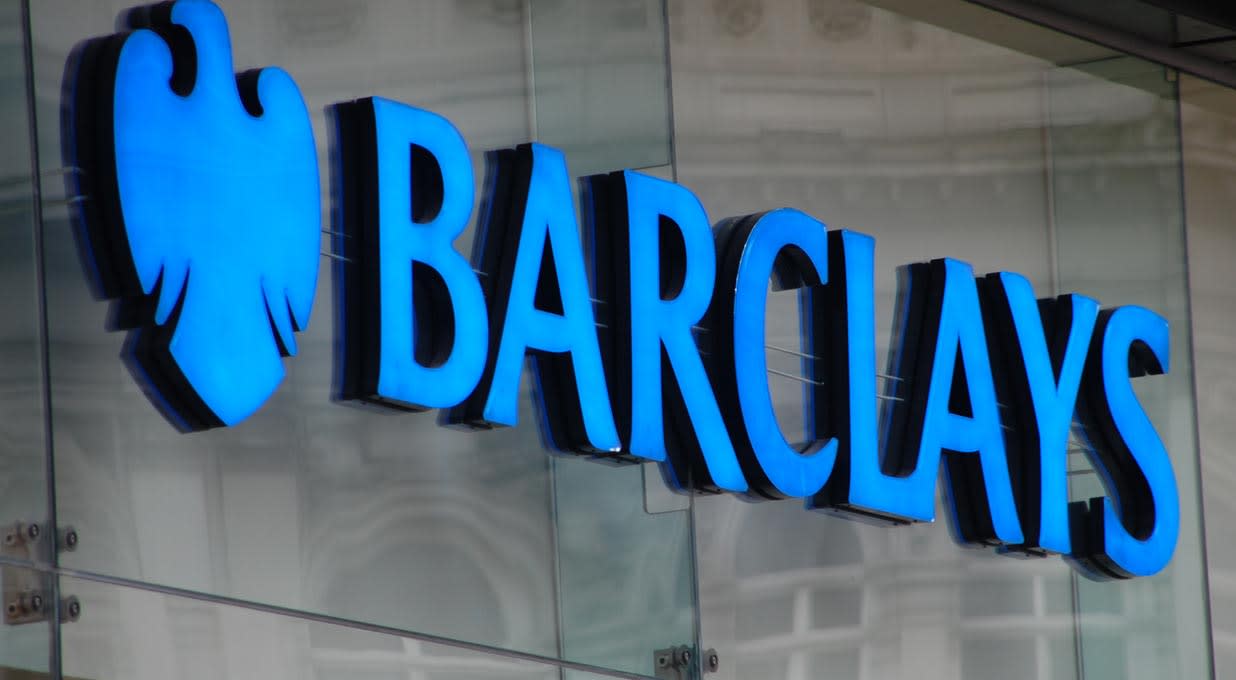Barclays reported a 24% rise in fourth quarter total income to £7.0bn (£6.7bn expected). Performance was broadly positive across divisions, with the UK and Investment Banking showing strong growth.
Profit before tax rose from £110mn to £1.7bn (£1.6bn expected), with growth driven by higher total income and one-off costs impacting the comparable period. Credit impairment charges of rose from £552mn to £711mn, with loan loss rates for the year better than targets.
The CET1 ratio, a key measure of capital levels, ended the year at 13.6% (target range 13-14%). The group announced a 5.5p final dividend and £1bn buyback.
For 2025, Barclays expects a progressive increase in capital returns alongside underlying net interest income of £12.2bn (2024: £11.2bn).
The shares fell 5.0% in early trading.
Our view
Barclays was trading high into results, so the lack of any materially upgraded guidance looks to be the cause of a dip on the day. Putting on a longer-term lens, this was a good final quarter with positive trends for 2025.
There are a few moving parts to operations, but looking at more traditional interest income streams, the environment improved as we moved through the year. The UK arm generates over half of all interest income, so improving trends at home have been positive.
Specifically, the shift from savers to longer term and less profitable accounts has slowed, there were only two rate cuts when Barclays had planned for five, the mortgage market is making a recovery, and the structural hedge has been an ongoing source of interest income growth (essentially a bond portfolio that should yield higher returns as older contracts mature).
But Barclays is a well-diversified business, and the UK's just one part. It's also one of the largest global investment banks and has a sizeable US credit card business.
Higher rates along with increased US credit card balances, have been a tailwind, but it can be a double-edged sword. Default rates on US credit cards have stabilised at comfortable levels, and while loan losses were lower year-on-year, balance sheet reserves are being tapped. This is an area to watch over the coming quarters.
The large investment bank is one of Barclays’ key differentiators and a driving force behind new medium-term targets. As we saw with some of the US giants, the long-awaited recovery in investment banking fees is starting to show its face. Trading activity in both the equity and debt markets is also looking good, and crucially Barclays saw better growth in fixed income and equity markets than its US peers in the final quarter – though competition is hot.
The balance sheet is well capitalised and guidance points to a further £7bn+ in distributions over the next 2 years, weighted toward buybacks. It’s ambitious and no returns are guaranteed.
Barclays has had a material re-rating over 2024. We think much of that is justified, with the depressed levels seen for most of the past couple of years being unwarranted. We see room for optimism and think guidance looks conservative. But with intense competition in the US and some work to be done on costs, we prefer other names in the sector.
Environmental, social, and governance (ESG) risk
The financials sector is medium-risk in terms of ESG. Product governance is the largest risk for most companies, especially those in the US and Europe with enhanced regulatory scrutiny. Data privacy and security is also an increasingly important risk for banks and diversified financial firms. Business ethics, ESG integration and labour relations are also worth monitoring.
According to Sustainalytics, Barclays’ overall management of material ESG issues is strong.
Barclays has some room for improvement regarding customer data privacy and environmental commitments. Despite strong policies overall, investigations are ongoing about alleged currency manipulation, and its data security could use strengthening with more frequent risk assessments and external audits. The quality of its environmental policy has deteriorated, with limited commitments to reducing emissions.
Barclays key facts
All ratios are sourced from LSEG Datastream, based on previous day’s closing values. Please remember yields are variable and not a reliable indicator of future income. Keep in mind key figures shouldn’t be looked at on their own – it’s important to understand the big picture.
This article is not advice or a recommendation to buy, sell or hold any investment.No view is given on the present or future value or price of any investment, and investors should form their own view on any proposed investment.This article has not been prepared in accordance with legal requirements designed to promote the independence of investment research and is considered a marketing communication.Non - independent research is not subject to FCA rules prohibiting dealing ahead of research, however HL has put controls in place(including dealing restrictions, physical and information barriers) to manage potential conflicts of interest presented by such dealing.Please see our full non - independent research disclosure for more information.


